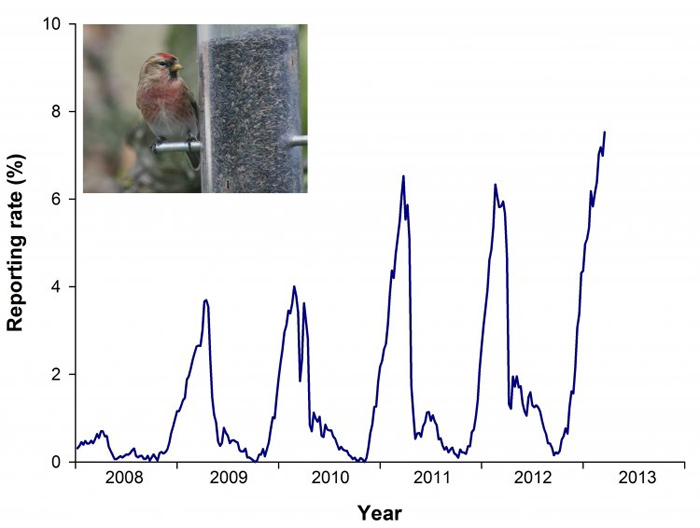Garden birdwatchers are seeing red
The delicate Lesser Redpoll is sweeping into a record number of gardens this spring, thrilling householders as it goes. The British Trust for Ornithology (BTO) has produced a free factsheet to help people to discover more about this bubbly newcomer.

The finch family boasts many popular garden birds, including Goldfinch, Chaffinch, Greenfinch and Bullfinch. More recently, a growing number of people have been able to add Lesser Redpoll to this list. Results collected through the year-round BTO Garden BirdWatch survey show a 15-fold increase in the use of gardens by Lesser Redpolls over the last few weeks compared with the same period five years ago.
The new BTO Lesser Redpoll Factsheet will help people to get to know this bird, including how to identify it, which can be a headache. Lesser Redpolls are by far the most frequently seen of the redpoll species in the UK, but occasionally householders will spot Common or even Arctic Redpolls. These birds all look similar so the factsheet highlights helpful distinguishing features.

Dr Tim Harrison, BTO Garden Ecology Team, commented: “Lesser Redpolls are a terrific addition to any garden, bringing with them lots of activity and lively twittering. They are sociable birds, often travelling with Siskins and Goldfinches during early spring.”
He added: “Their increasing use of bird feeders – particularly of nyger seed – is of considerable interest and importance because Lesser Redpolls are a species of high conservation concern. Early spring sees their abundance in gardens peak, so now is a great time to find out more about them.”
To request the free BTO Lesser Redpoll Factsheet, please email gbw@bto.org or telephone 01842-750050 and ask for the Garden Ecology Team.
The BTO
March 2013





